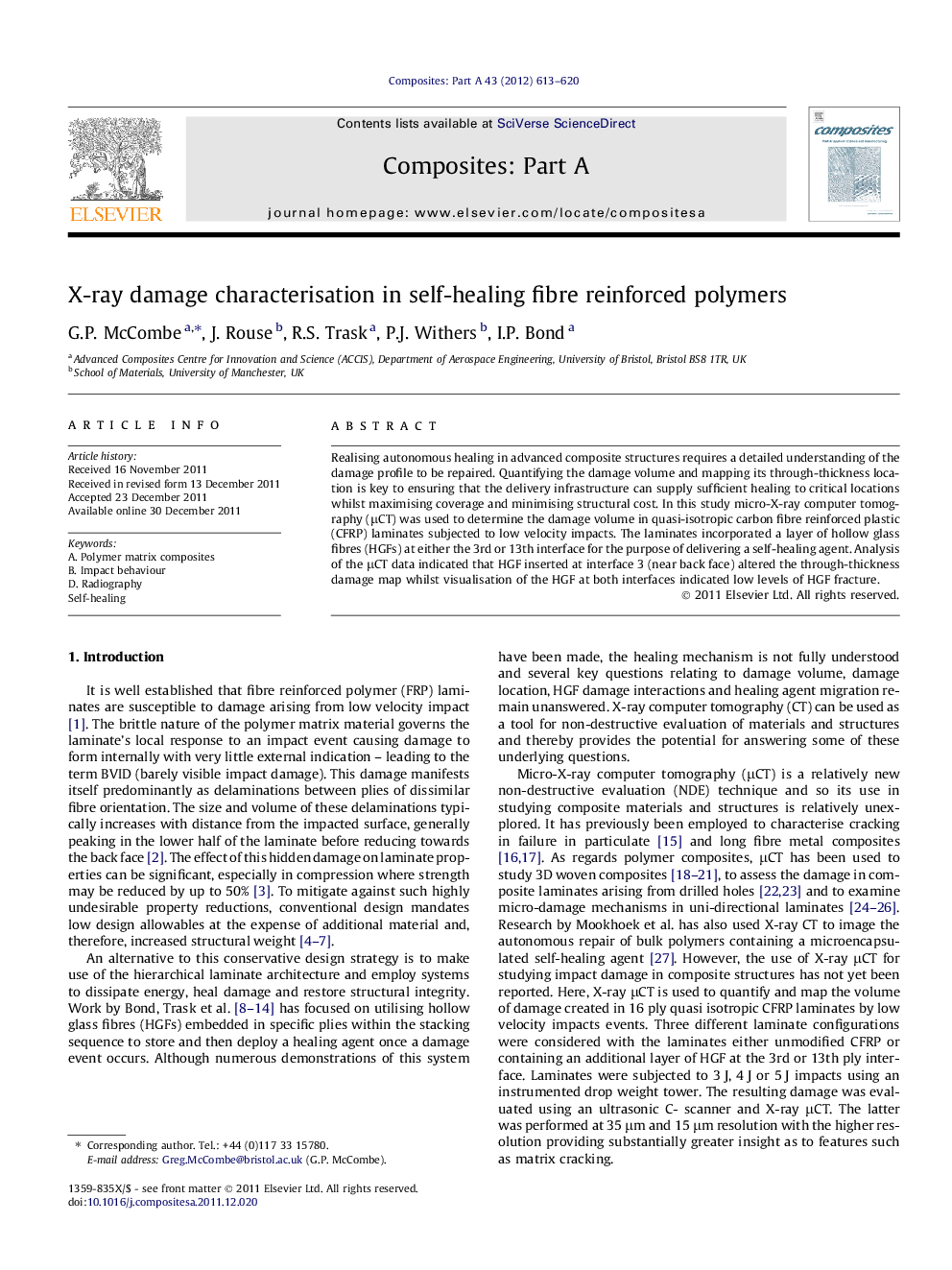| Article ID | Journal | Published Year | Pages | File Type |
|---|---|---|---|---|
| 1466772 | Composites Part A: Applied Science and Manufacturing | 2012 | 8 Pages |
Realising autonomous healing in advanced composite structures requires a detailed understanding of the damage profile to be repaired. Quantifying the damage volume and mapping its through-thickness location is key to ensuring that the delivery infrastructure can supply sufficient healing to critical locations whilst maximising coverage and minimising structural cost. In this study micro-X-ray computer tomography (μCT) was used to determine the damage volume in quasi-isotropic carbon fibre reinforced plastic (CFRP) laminates subjected to low velocity impacts. The laminates incorporated a layer of hollow glass fibres (HGFs) at either the 3rd or 13th interface for the purpose of delivering a self-healing agent. Analysis of the μCT data indicated that HGF inserted at interface 3 (near back face) altered the through-thickness damage map whilst visualisation of the HGF at both interfaces indicated low levels of HGF fracture.
